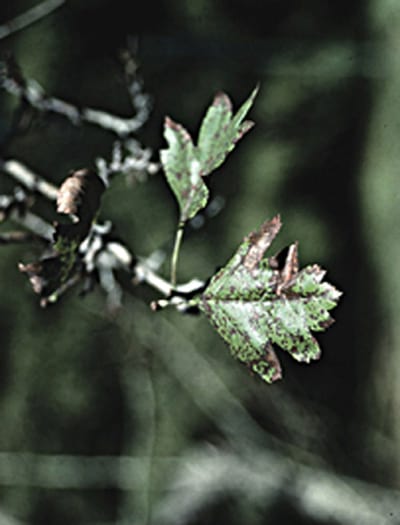Diplocarpon mespili (imperfect stage), AKA Hawthorn Leaf Spot
Found to be throughout North America and Europe.
Favored by cool, wet weather. Predictable outbreaks based on temperature and moisture conditions.
During cool, wet weather (60o to 80o F., 12-24 hour leaf wetness), small, circular, often bright red spots appear on leaves of red tip photinias and hawthorns. Many small spots may grow together to form large maroon blotches on heavily diseased leaves. Severe infections cause early and heavy defoliation, greatly reducing the landscape screening value and increasing the plant’s sensitivity to cold injury, other diseases and insects. Isolated plants or hedges often remain healthy since the fungal spores only splash over short distances.
Occuring in northern areas, but may continue year-round in regions with a mild winter climate, on evergreen hosts such as Indian and Yedda hawthorn, loquat, photinia, stranvaesia, and toyon. On deciduous hosts, the fungus may persist through winter in lesions on young, green twigs. From either year‑old leaves or twigs, conidia are splashed to developing leaves in spring. Conidia can also survive winter in acervuli on fallen leaves, and some new conidia are produced there in spring. Primary infection begins when spores are splashed onto new leaves. Thereafter, many repeating (secondary) cycles of disease start successive generations of conidia, causing new lesions.
Diplocarpon Theumenii


